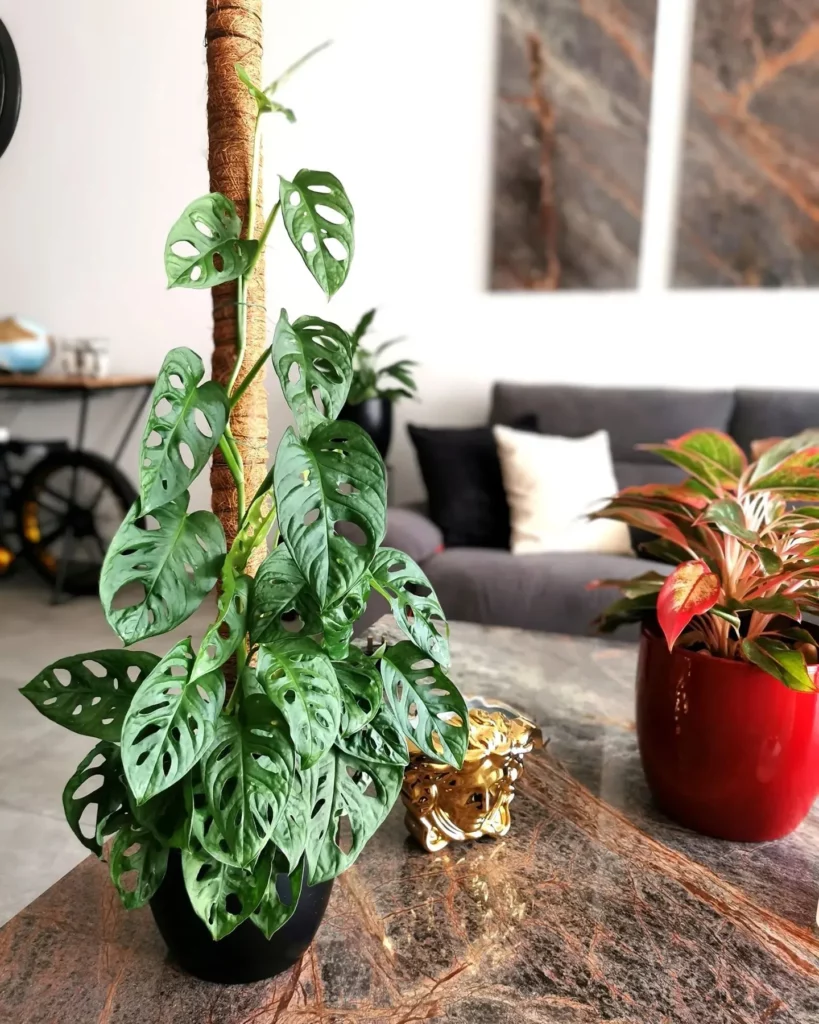If you are a plant enthusiast looking to add a touch of exotic beauty to your indoor space, the Monstera pinnatipartita is a stunning choice. This rare plant features fenestrated foliage and a climbing habit that can add a touch of natural elegance to any room.
Key Takeaways:
- Monstera pinnatipartita is a rare and exotic Monstera known for its stunning fenestrated foliage.
- Regular care, including monitoring for pests and diseases, repotting, and proper pruning, is key to maintaining a healthy Monstera pinnatipartita.
Appearance of Monstera pinnatipartita

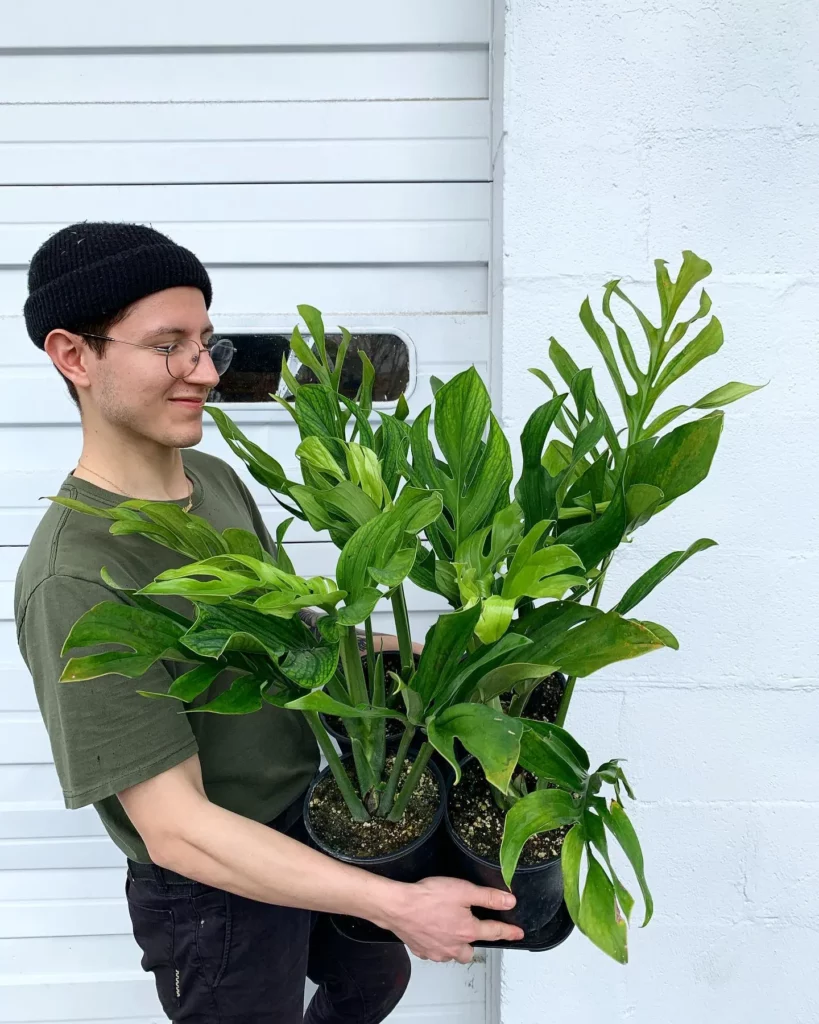
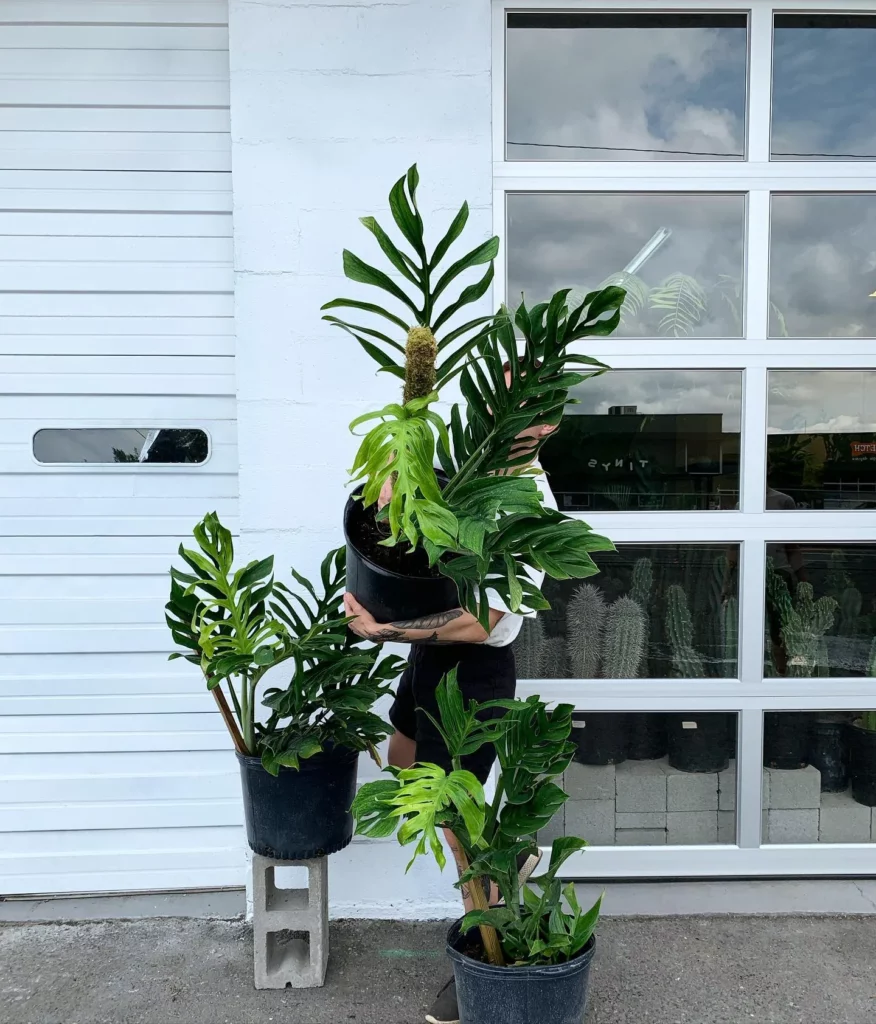
The Monstera pinnatipartita is an evergreen plant with a visually striking appearance. Its tall, sculptural stems and large, heart-shaped leaves make it a beautiful addition to any indoor or outdoor space. What sets this plant apart is its unique fenestrated foliage. The leaves have deep splits that extend nearly to the midrib, giving them a distinct and eye-catching look.
The fenestrations not only enhance its aesthetic appeal but also serve a functional purpose. They help the plant by allowing light to filter through the leaves, preventing them from getting overshadowed in its natural rainforest habitat.
Unique Features of Monstera pinnatipartita
- Large heart-shaped leaves with deep splits
- Fenestrations extend almost to the midrib
- Dark green foliage with an intricate pattern
- Tall and sculptural stems
No products found.
Light Requirements for Monstera pinnatipartita
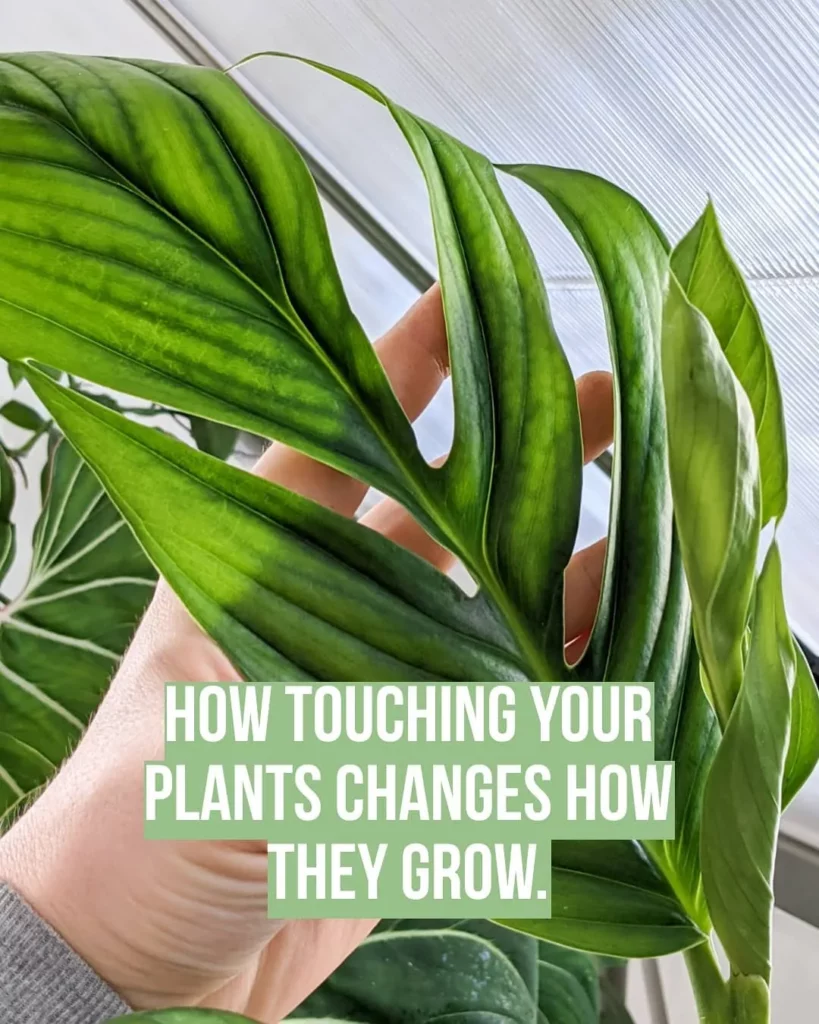
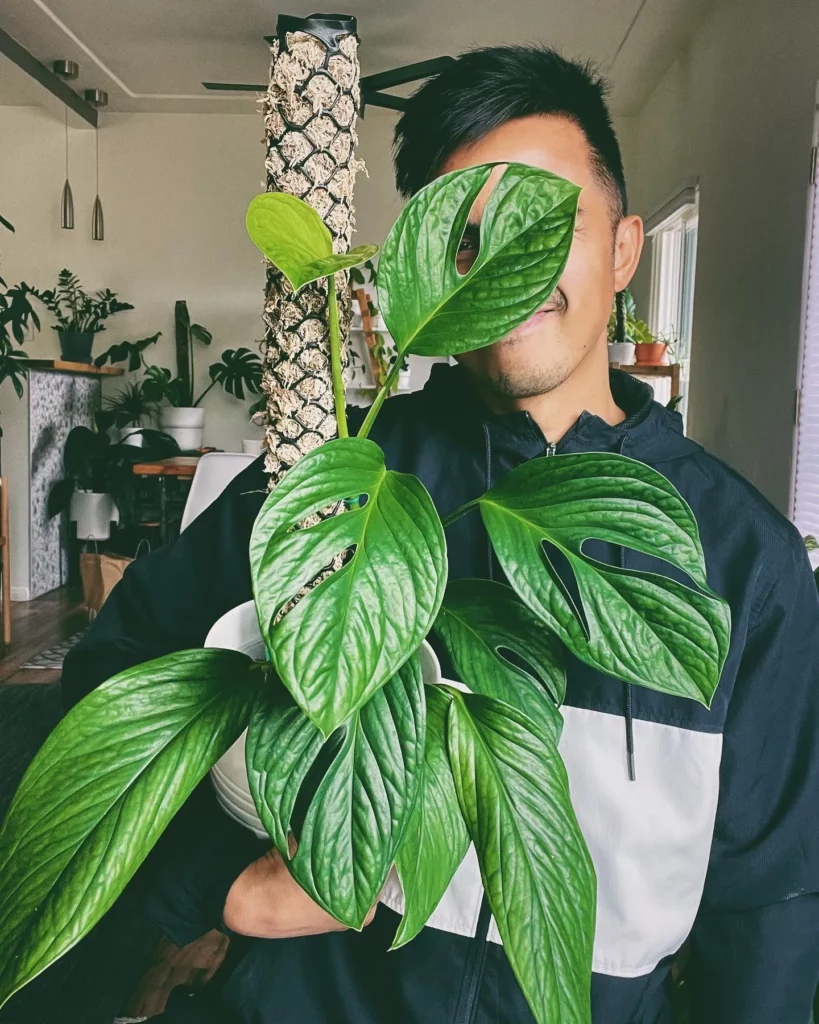
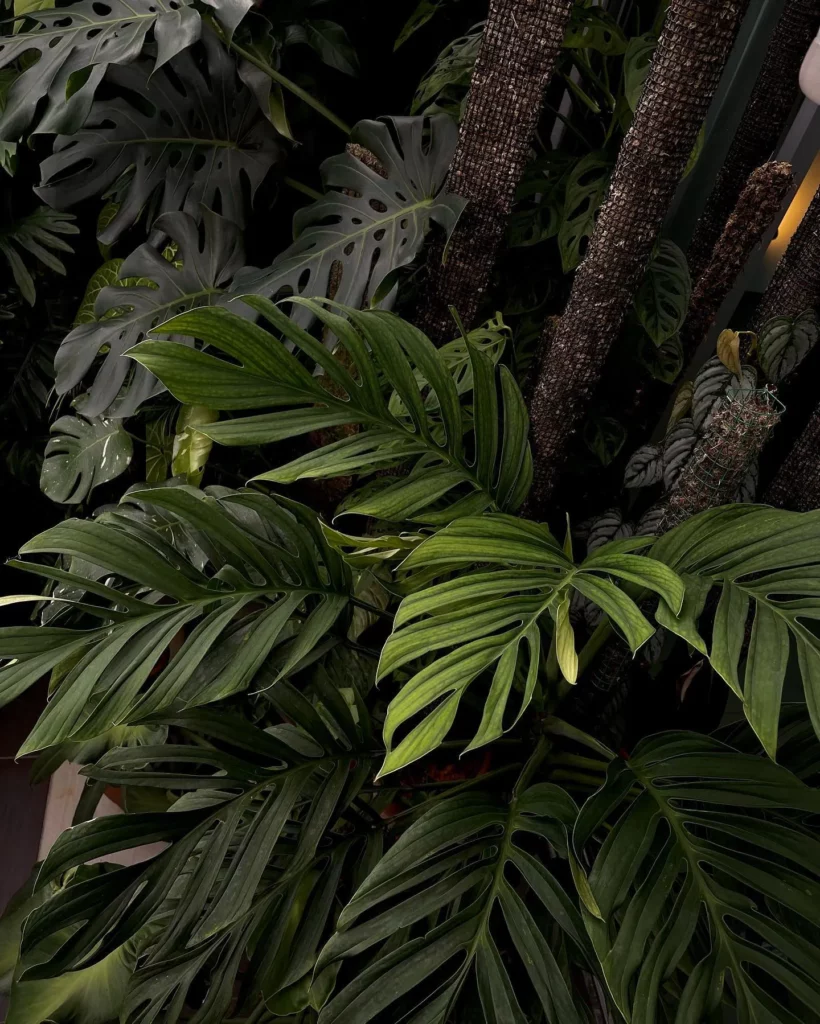
Proper light exposure is crucial for the healthy growth of your Monstera pinnatipartita. These plants thrive in bright, indirect light, mimicking the dappled light they receive in their natural habitat. Placing your plant near an east-facing window will provide it with the optimal amount of light. If an east-facing window is not available, choose a well-lit location away from intense direct sunlight.
Avoid placing your Monstera pinnatipartita in a south- or west-facing window without proper protection, as direct sunlight can scorch the leaves. If you only have south- or west-facing windows, position your plant further away or use sheer curtains to filter the light.
If you have a north-facing window or are unable to provide sufficient natural light, you can supplement with grow lights. These lights can provide the necessary light intensity and spectrum to support healthy foliage development. Place the lights at an appropriate height and time them to mimic natural daylight cycles.
Light requirements summary:
- Thrives in bright, indirect light
- Place near an east-facing window
- Avoid intense direct sunlight
- Use sheer curtains for south- or west-facing windows
- Supplement with grow lights for north-facing aspects
Watering Monstera pinnatipartita
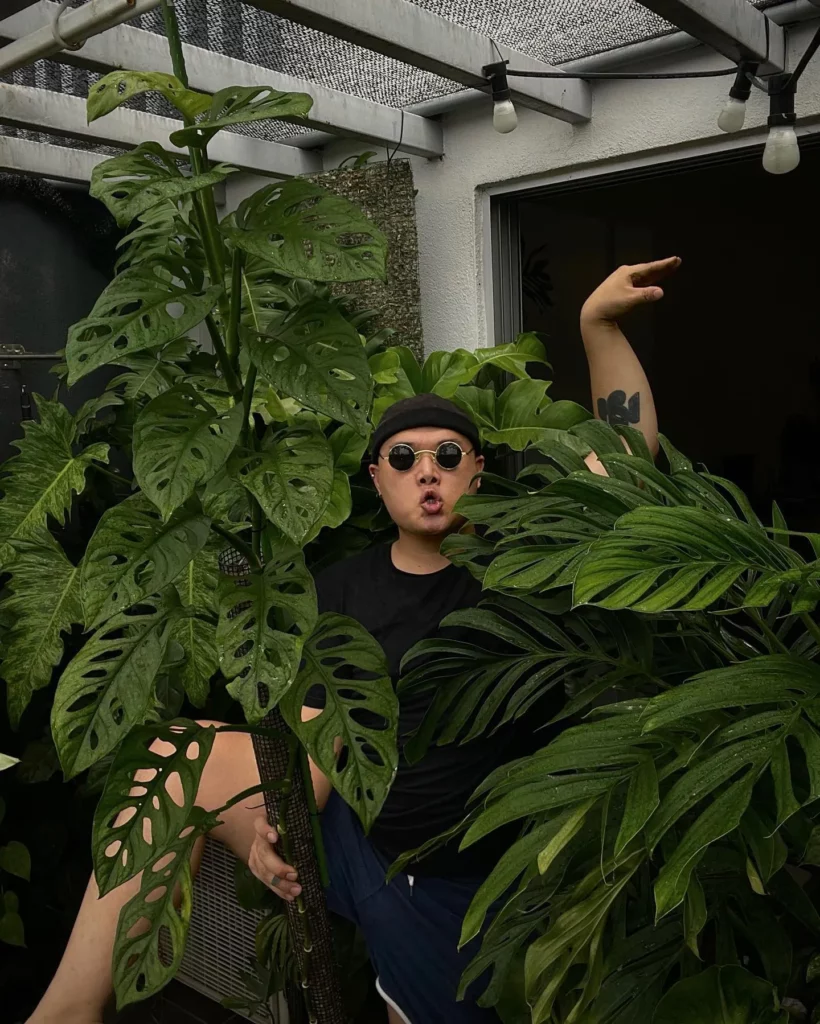
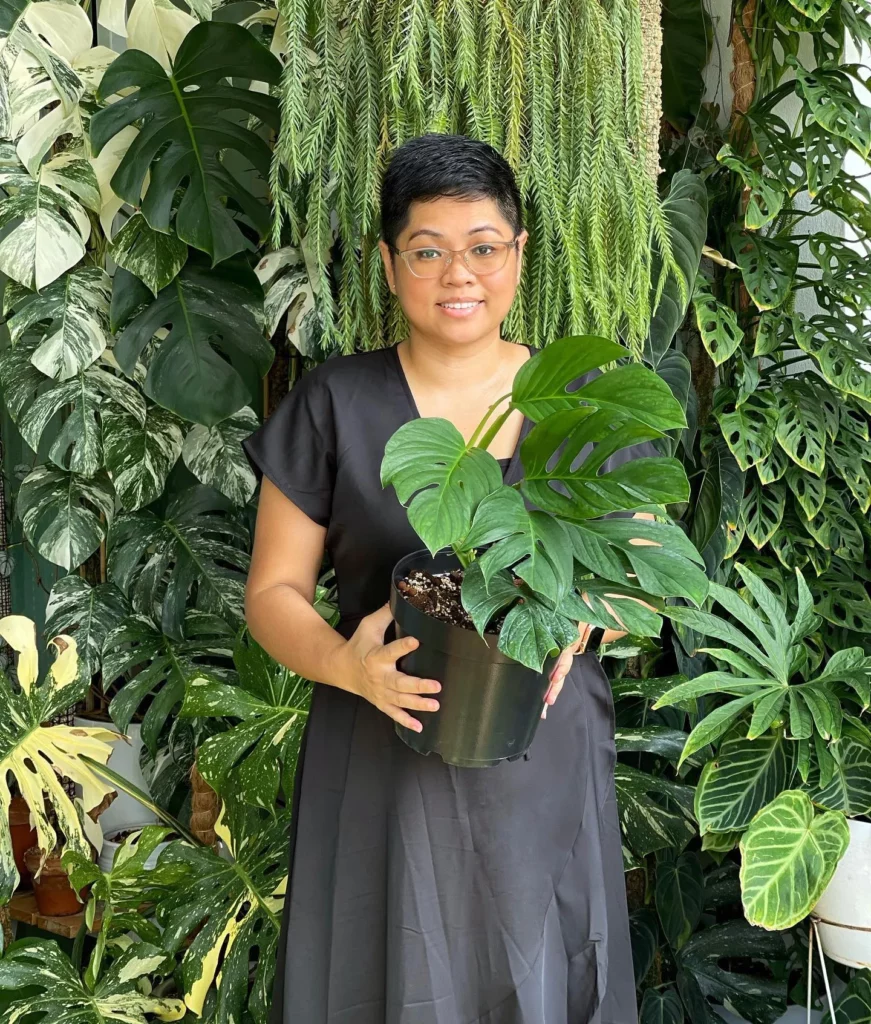

Proper watering is crucial for the health and well-being of your Monstera pinnatipartita. Here are some important watering tips to ensure your plant thrives:
- Check the soil moisture: Before watering, always check the top few inches of soil. If it feels dry to the touch, it’s time to water your plant.
- Avoid overwatering: Monstera pinnatipartitas prefer evenly moist soil, but overwatering can lead to root rot. Make sure the soil is well-drained, and water until it starts to drain from the bottom of the pot.
- Establish a watering schedule: The frequency of watering will depend on factors such as humidity levels and the growing season. Generally, watering every one to two weeks during the growing season and less frequently in winter is recommended.
- Observe your plant’s needs: Each Monstera pinnatipartita may have unique watering requirements. Monitor your plant closely and adjust the watering schedule accordingly if you notice any signs of under or overwatering.
Fertilizing Monstera pinnatipartita

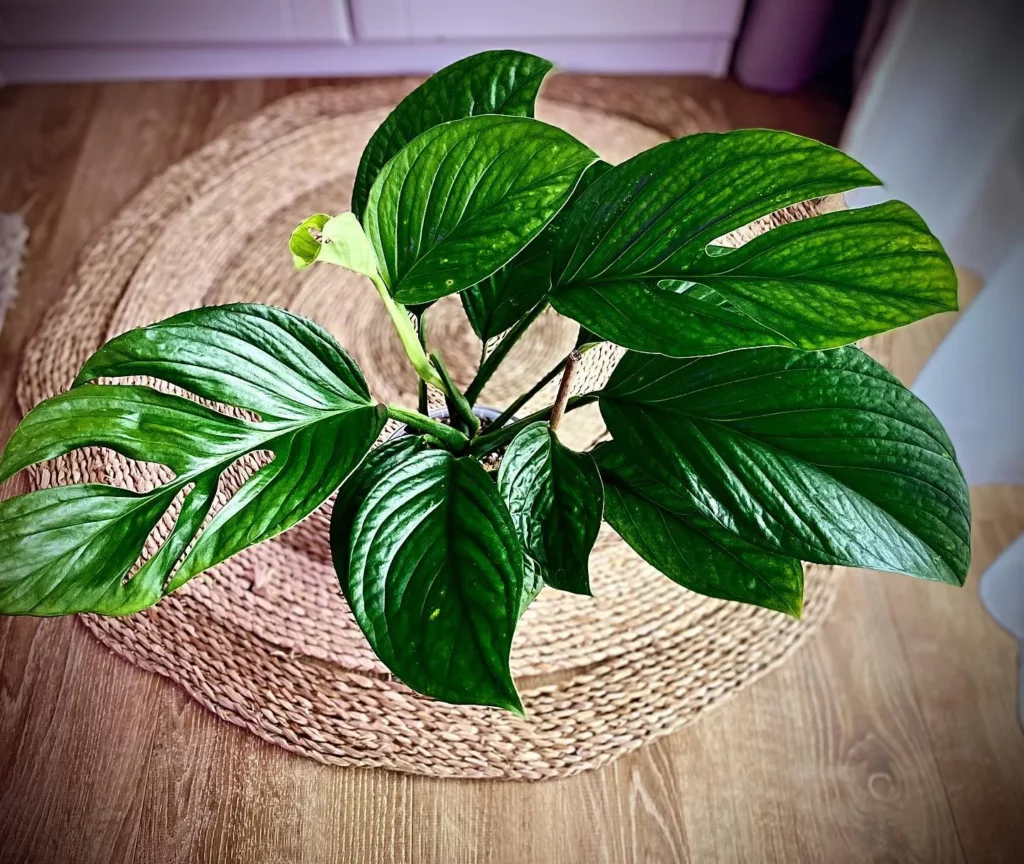
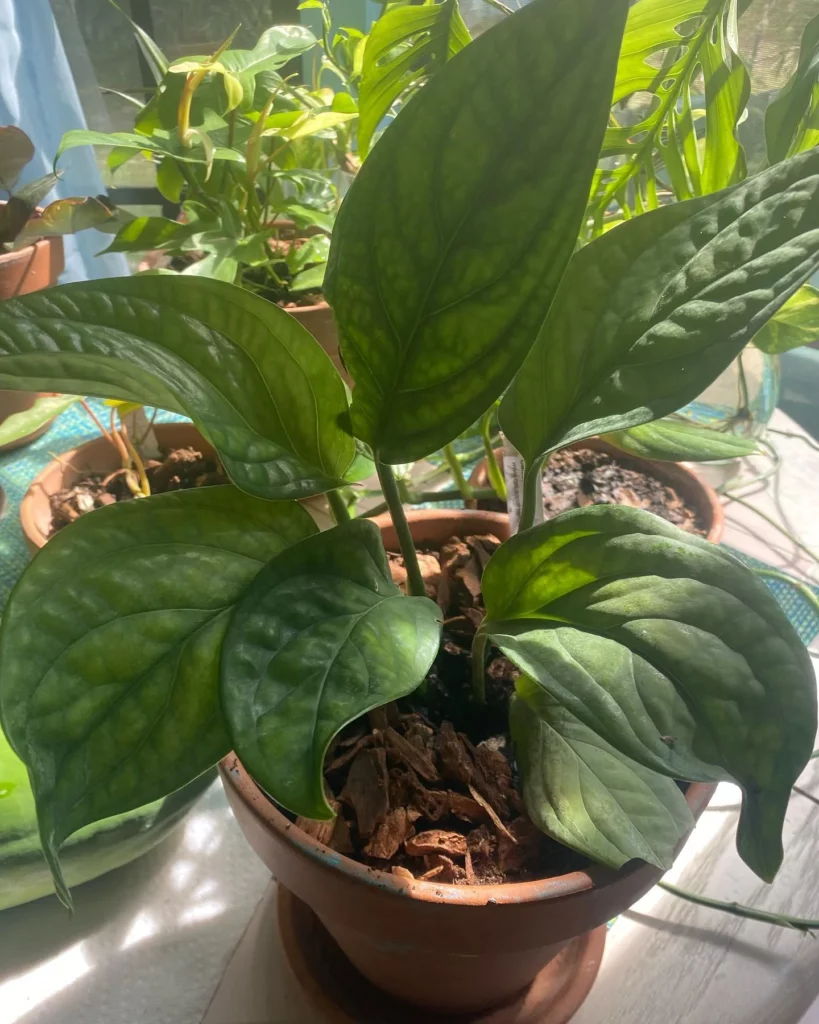
Fertilizing your Monstera pinnatipartita is an important part of its overall care. Providing the right nutrients will help promote healthy growth and vibrant foliage. Here are some tips to help you fertilize your Monstera pinnatipartita:
- Choose the right fertilizer: Look for a slow-release balanced liquid fertilizer with a 20-20-20 NPK ratio. This ratio ensures a good balance of essential nutrients for your plant.
- Fertilize during the growing season: Monstera pinnatipartita plants benefit from regular fertilization during the spring and summer months when they are actively growing. Fertilize every few weeks to provide a steady supply of nutrients.
- Adjust fertilization in winter: During the winter months when growth slows down, reduce the frequency of fertilization to once a month or less. This allows the plant to go through its natural resting period.
- Follow package instructions: Always follow the instructions on the fertilizer packaging for the correct dosage and application methods. Over-fertilizing can burn the roots and cause damage.
Additional Tips:
- Avoid fertilizing young or newly propagated plants: Wait until your Monstera pinnatipartita has established a strong root system before introducing fertilizer.
- Water before fertilizing: Always water your plant thoroughly before applying fertilizer. This helps prevent root burn and allows the nutrients to be absorbed more effectively.
- Monitor for signs of overfertilization: If you notice leaf burn or yellowing, reduce the frequency of fertilization and flush the soil with water to remove any excess nutrients.
Potting Monstera pinnatipartita
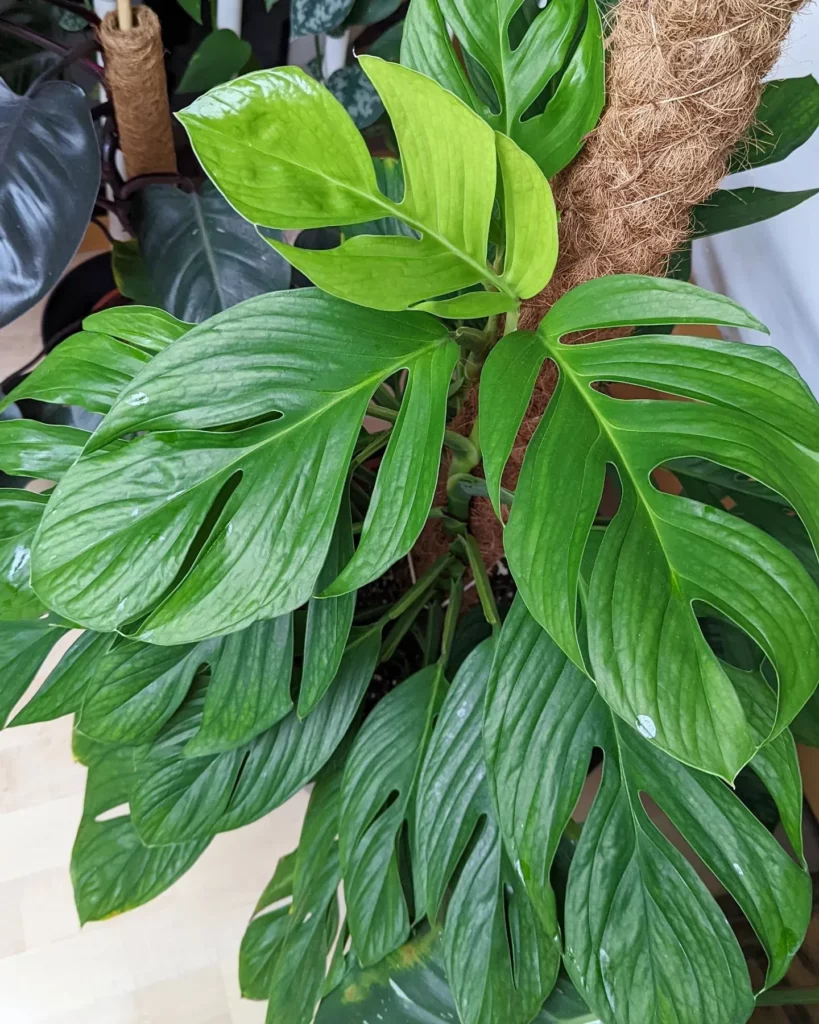
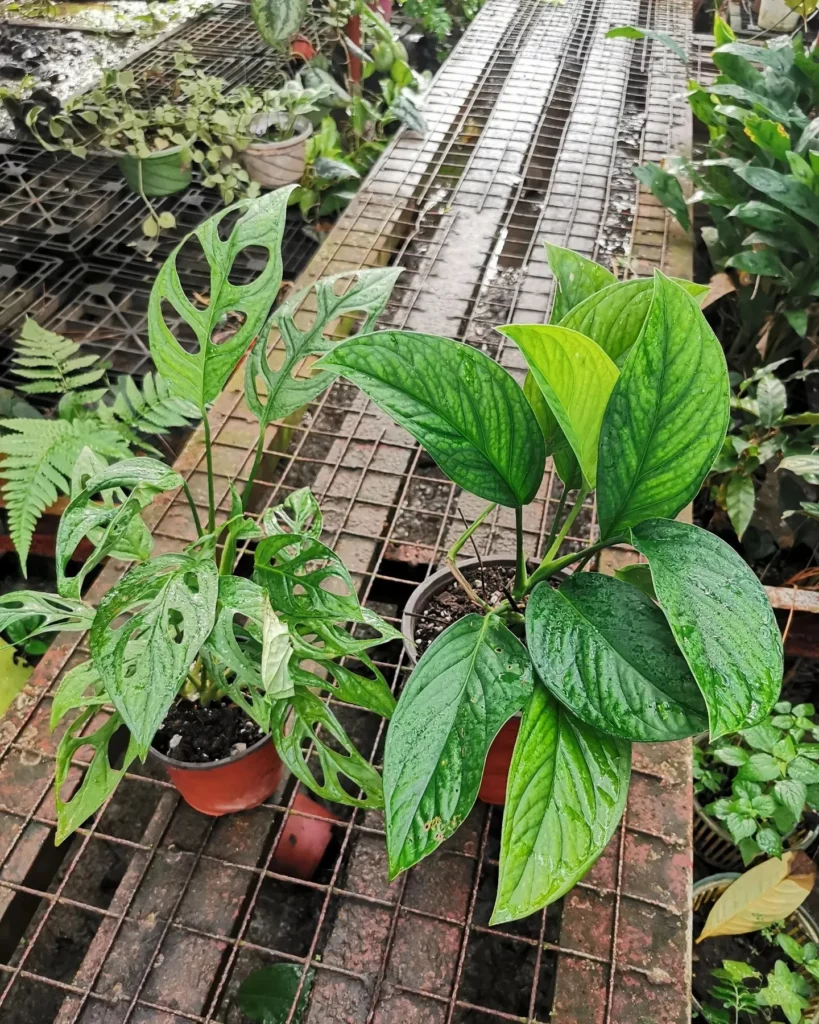
Proper potting of Monstera pinnatipartita is essential for its overall health and growth. Follow these steps to ensure successful potting:
- Select a pot that is about 2-3 inches wider than the current root ball of your Monstera pinnatipartita. Choose a pot with good drainage holes to prevent waterlogging.
- Prepare a well-aerated soil mix by combining vermiculite, orchid bark, and sustainable coco coir. Alternatively, you can use ready-made monstera or aroid mixes.
- Carefully remove the plant from its current pot, being mindful not to damage the roots. Gently loosen the root ball if it appears root-bound.
- Place a layer of the prepared soil mix at the bottom of the new pot, ensuring it covers the drainage holes.
- Position the Monstera pinnatipartita in the center of the pot, making sure it sits at the same depth as it was in the previous pot.
- Fill the remaining space around the plant with the soil mix, gently pressing it down to secure the plant in place.
- Water the newly potted plant thoroughly, allowing the water to drain out of the bottom of the pot.
Potting Tips:
- Choose a pot with a sufficient number of drainage holes to prevent water accumulation and root rot.
- Consider using a moss pole or trellis to support the climbing habit of mature Monstera pinnatipartita plants and promote healthy growth.
- Regularly check the moisture level of the soil to avoid overwatering or underwatering. Adjust your watering schedule accordingly.
- Place your potted Monstera pinnatipartita in a well-lit area away from direct sunlight to ensure proper growth and development.
- Monitor the root growth of your plant and repot it into a larger pot if necessary. This will provide more space for the roots to expand and support the plant’s growth.
Propagation of Monstera pinnatipartita
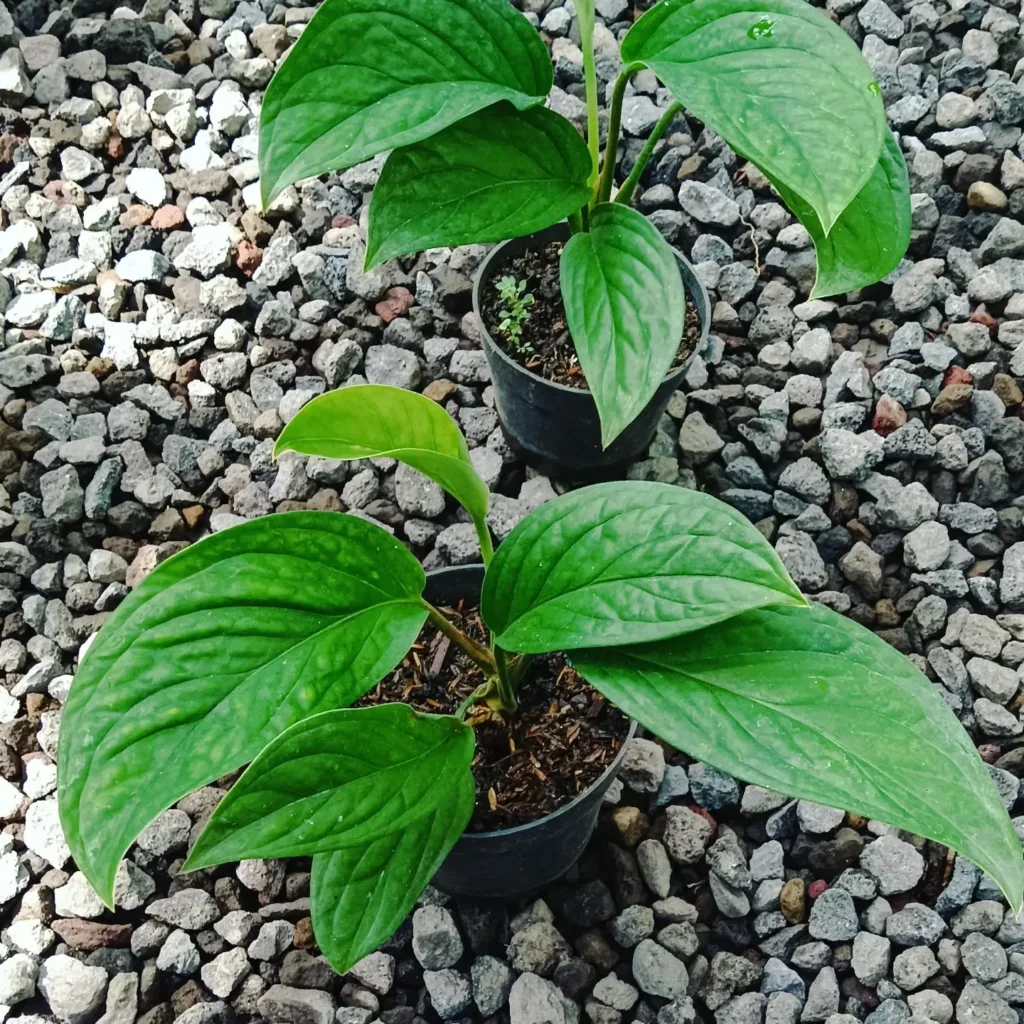
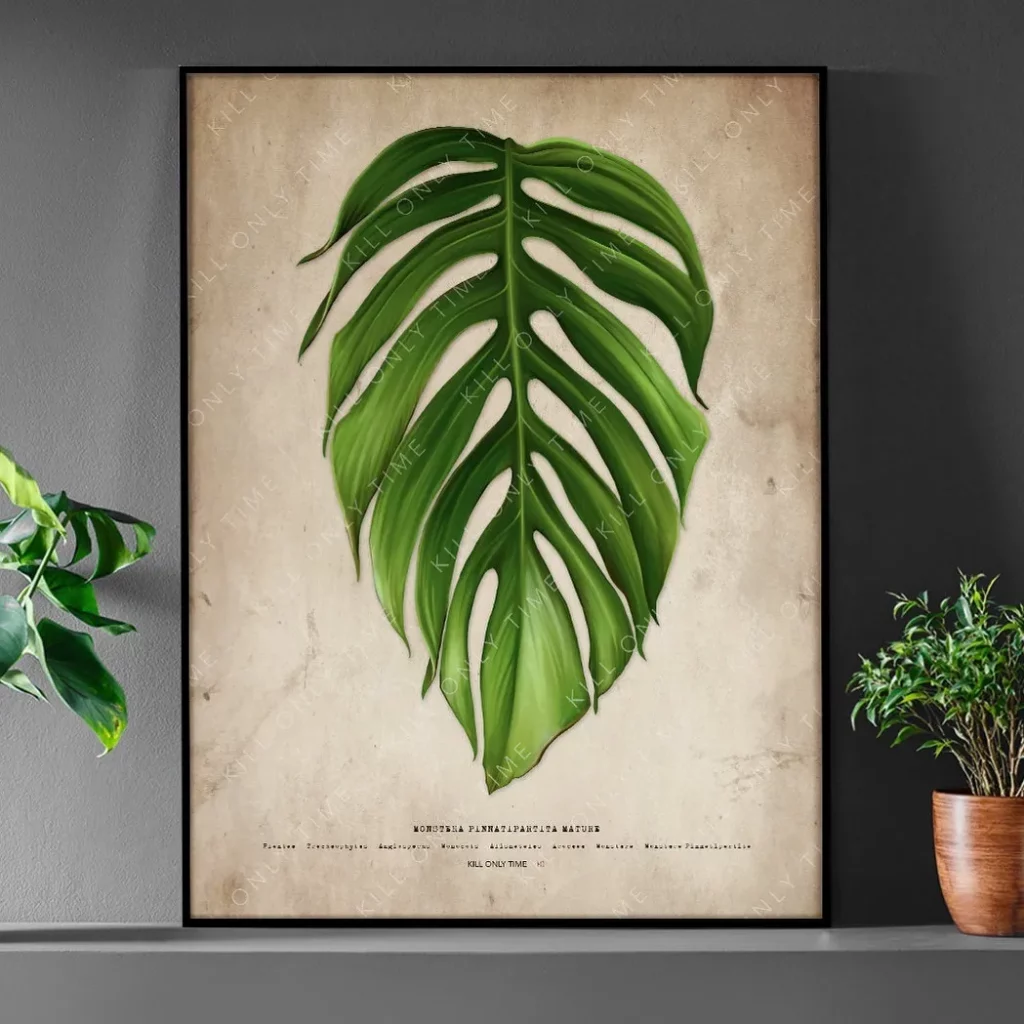
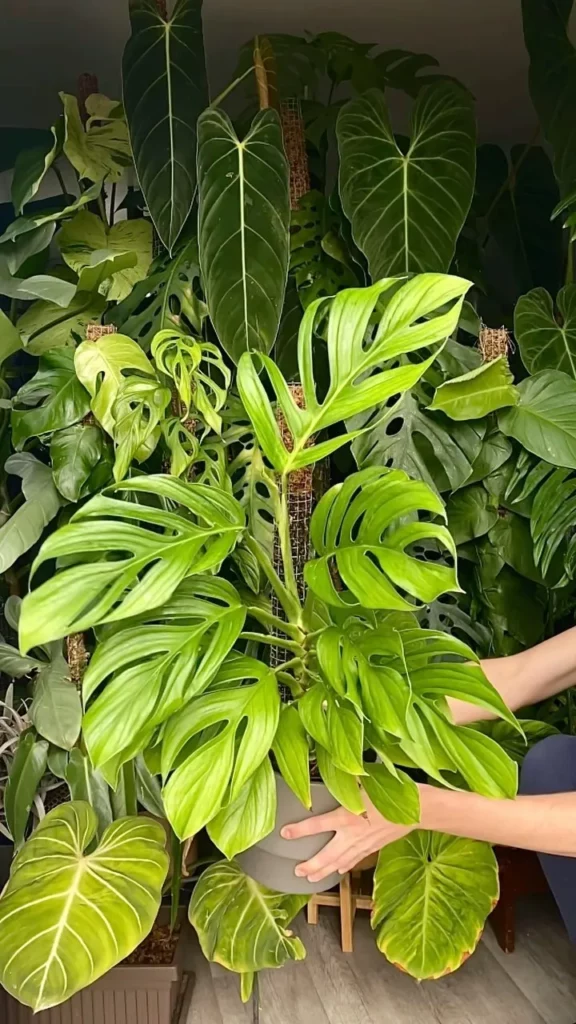
Propagating Monstera pinnatipartita can be an exciting and rewarding experience for plant enthusiasts. There are two common methods for propagating this beautiful plant: stem cuttings and air layering.
Stem Cuttings
To propagate Monstera pinnatipartita through stem cuttings, start by selecting a healthy stem with at least one intact leaf and a node. Use clean, sharp pruning shears to make a clean cut just below a node. Dip the cut end of the cutting into a rooting hormone to encourage root development. Then, place the cutting into a moist, well-draining potting mix.
Keep the soil consistently moist but not waterlogged, and provide indirect light to promote growth. Within a few weeks to a few months, roots should start to form, indicating successful propagation. Once the roots have developed, you can transfer the cutting to a larger pot or container for continued growth.
Air Layering
Air layering is another method commonly used to propagate Monstera pinnatipartita. Start by selecting a healthy stem and making a small cut just below a node. Apply rooting hormone to the cut section, and then wrap moist sphagnum moss around the cut area. Secure the moss in place with twine or plastic wrap.
Keep the moss consistently moist by misting or watering it regularly. After a few months, roots will begin to form within the moss. Once the roots are well-developed, carefully cut below the rooted section and plant it in a potting mix. Provide the newly propagated plant with the same care and attention as a mature Monstera pinnatipartita.
Growth and Development of Monstera pinnatipartita
Monstera pinnatipartita is a plant that exhibits moderate growth and development under optimal conditions. As the plant matures, it can reach heights of up to 6 feet indoors and over 30 feet. With their tall, sculptural stems and large, heart-shaped leaves, these plants make a striking addition to any indoor or outdoor space. The leaves of Monstera pinnatipartita grow larger and develop deeper fenestrations as the plant matures, adding to its unique beauty.
To ensure the healthy growth and development of Monstera pinnatipartita, it is important to provide the right care. This includes providing bright, indirect light, as these plants thrive in the dappled light of their native tropical rainforest habitats. Adequate light exposure is crucial for the development of healthy foliage and optimal fenestration. Additionally, regular watering is necessary to maintain evenly moist soil, avoiding both overwatering and underwatering.
Fertilization is another important aspect of promoting growth and development in Monstera pinnatipartita. Using a slow-release balanced liquid fertilizer with a 20-20-20 NPK ratio can provide the essential nutrients for the plant’s overall health. During the active growing season, fertilizing every few weeks can support healthy growth. Repotting may be required every year or two to accommodate the plant’s growth and provide fresh nutrients.
Promoting Healthy Growth and Development:
- Provide bright, indirect light to support healthy foliage development and fenestration.
- Water regularly, allowing the top few inches of soil to dry out before watering again.
- Fertilize with a balanced liquid fertilizer during the growing season to provide essential nutrients.
- Consider repotting every year or two to accommodate the plant’s growth and provide fresh soil.
Pests and Diseases of Monstera pinnatipartita
When caring for your Monstera pinnatipartita, it’s important to be aware of potential pests and diseases that can affect its health. Even though Monstera plants are generally resilient, they are still susceptible to certain issues. By understanding common problems and taking proper precautions, you can ensure your plant thrives.
Pests
Common pests that can affect Monstera pinnatipartita include mealybugs and spider mites. These tiny insects can infest the foliage, causing damage and hindering growth. To prevent infestations, regularly inspect your plant and wipe down the leaves with a damp cloth to remove any pests. If an infestation occurs, consider using natural remedies like neem oil or insecticidal soap to control the pests effectively.
Diseases
While Monstera pinnatipartita is generally resistant to diseases, there are still a few issues to watch out for. Overwatering can lead to root rot, so it’s crucial to ensure the soil is well-draining and allow it to dry out between waterings. Additionally, improper humidity levels can cause problems like leaf yellowing or curling. Regularly monitor the plant for any signs of disease and make adjustments to watering, light, and humidity as needed to maintain a healthy environment for your Monstera pinnatipartita.
Repotting Monstera pinnatipartita
Repotting is an essential part of Monstera pinnatipartita plant care, as it allows the plant to continue growing and thriving. When your Monstera pinnatipartita has outgrown its current pot or the soil has become compacted, it’s time to repot.
To repot your Monstera pinnatipartita, choose a pot that is about 3 inches wider than the root ball. Make sure the pot has good drainage holes to prevent waterlogging. Before transferring the plant to its new pot, gently remove it from its current container, taking care not to damage the roots. You can loosen the root ball slightly if it’s tightly packed to encourage healthy root growth.
When repotting, take the opportunity to trim any unhealthy or damaged leaves. This will help redirect the plant’s energy towards producing new, healthy foliage. You can safely trim up to 25 percent of the plant’s height during the repotting process.
After repotting, provide your Monstera pinnatipartita with the same care as before, including proper watering, lighting, and fertilization. Regularly wiping the foliage with a damp cloth will help keep the leaves looking glossy and minimize the chance of pests. With the right care and a larger pot, your Monstera pinnatipartita will continue to thrive and bring beauty to your indoor space.
Repotting Monstera pinnatipartita: Step-by-Step Guide
- Choose a pot that is about 3 inches wider than the root ball of your Monstera pinnatipartita.
- Ensure the pot has good drainage holes to prevent waterlogging.
- Gently remove the plant from its current pot, being careful not to damage the roots.
- If the root ball is tightly packed, loosen it slightly to encourage healthy root growth.
- Trim any unhealthy or damaged leaves to redirect the plant’s energy towards new growth.
- Place the Monstera pinnatipartita in its new pot and fill in the gaps with fresh, well-aerated soil mix.
- Water the plant thoroughly after repotting and ensure any excess water drains away.
- Continue caring for your Monstera pinnatipartita with regular watering, appropriate light, and fertilization.
Common Problems with Monstera pinnatipartita
If you’re experiencing issues with your Monstera pinnatipartita, don’t worry, you’re not alone. Like any other plant, the Monstera pinnatipartita can encounter some common problems. Understanding these issues and their causes can help you provide the necessary care to keep your plant happy and healthy.
Drooping Leaves
One common problem with Monstera pinnatipartita is drooping leaves. This can be caused by overwatering, underwatering, or improper light conditions. To address this issue, ensure that you are watering your plant appropriately by checking the soil moisture levels regularly. Adjust the watering schedule accordingly to maintain a consistent level of soil moisture. Additionally, make sure your plant is receiving the right amount of indirect light. If the leaves are drooping due to inadequate light, consider moving your plant to a brighter location.
Yellowing Leaves
Yellowing leaves are another common problem seen in Monstera pinnatipartita. This can be a sign of overwatering, nutrient deficiencies, or inadequate light. To prevent yellowing leaves, make sure you are not overwatering your plant and that the soil has proper drainage. Consider fertilizing your plant with a balanced liquid fertilizer specifically formulated for Monstera plants to ensure it receives the necessary nutrients. Lastly, evaluate the lighting conditions and make any necessary adjustments to provide adequate light for your plant.
Brown Spots
Brown spots on the leaves can indicate several issues, including overwatering, underwatering, or fungal infections. To prevent brown spots, make sure you are watering your plant appropriately and allowing the soil to dry out between waterings. Avoid getting water on the leaves, as this can lead to fungal infections. If you notice brown spots, you can trim away the affected areas and adjust your watering practices. If the problem persists, consult a plant expert or horticulturist for further guidance.
Tips for Successful Care of Monstera pinnatipartita
Taking proper care of your Monstera pinnatipartita is key to ensuring its health and beauty. Here are some important tips to help you successfully care for your plant:
1. Provide optimal growing conditions: Monstera pinnatipartita thrives in bright, indirect light. Place your plant near an east-facing window or in a well-lit location away from intense direct sunlight. Ensure your plant receives adequate light exposure for healthy foliage development.
2. Water appropriately: Keep the soil evenly moist, but avoid overwatering. Water your plant when the top few inches of soil are dry. Ensure proper drainage by allowing excess water to drain away. Adjust the frequency of watering based on humidity levels and the season.
3. Use a well-aerated soil mix: Monstera pinnatipartita requires a well-draining soil mix to prevent waterlogged roots. Use a mix of vermiculite, orchid bark, and coco coir or opt for ready-made monstera or aroid mixes designed for optimal drainage and moisture retention.
4. Monitor humidity levels: Monstera pinnatipartita prefers higher humidity levels. Increase humidity by placing a tray filled with water near your plant or using a humidifier. Regularly wiping the foliage with a damp cloth can also help maintain humidity and keep the leaves clean and dust-free.
FAQ
Is Monstera pinnatipartita toxic to pets?
Yes, Monstera pinnatipartita, like other Monstera plants, is toxic to pets due to the presence of insoluble calcium oxalates. It is important to keep pets away from the plant to avoid ingestion.
How tall can Monstera pinnatipartita grow?
Monstera pinnatipartita can grow up to 6 feet tall indoors and over 30 feet tall outdoors, depending on the growing conditions.
What kind of light does Monstera pinnatipartita need?
Monstera pinnatipartita thrives in bright, indirect light. It should be placed near an east-facing window or in a well-lit location away from intense direct sunlight.
How often should I water my Monstera pinnatipartita?
Water your Monstera pinnatipartita when the top few inches of soil are fully dry. The frequency of watering will depend on factors such as humidity levels and the growing season, but generally, it should be watered every one to two weeks during the growing season and less frequently in winter.
How often should I fertilize my Monstera pinnatipartita?
Use a slow-release balanced liquid fertilizer with a 20-20-20 NPK ratio during the spring and summer growing seasons. Fertilize every few weeks. In winter, fertilization can be reduced to once a month or less.
What type of soil mix should I use for Monstera pinnatipartita?
Monstera pinnatipartita prefers well-aerated soil mixes that provide good drainage. Use a mix of vermiculite, orchid bark, and sustainable coco coir, or ready-made monstera or aroid mixes.
How can I propagate Monstera pinnatipartita?
Monstera pinnatipartita can be propagated through stem cuttings or air layering. Take stem cuttings with at least one intact leaf and a node, dip the cut end in rooting hormone, and place it in moist, well-draining growing medium. For air layering, make a small cut near a node, wrap moist sphagnum moss around it, and secure it in place until roots form.
How fast does Monstera pinnatipartita grow?
Monstera pinnatipartita is a moderate grower and can reach maturity in about 3 years under optimal conditions. It can grow up to 2 feet annually, producing larger leaves with deeper fenestrations as it matures.
What can I do to prevent pests and diseases on my Monstera pinnatipartita?
Regularly wipe the foliage with a damp cloth to prevent pest infestations. If pests are present, use neem oil or insecticidal soap for control. Monitor the plant for any signs of diseases or issues, and make adjustments to watering, light, and humidity levels if necessary.
How often should I repot my Monstera pinnatipartita?
Mature Monstera pinnatipartita specimens may benefit from repotting every year or two to accommodate their growth. Repot in the spring before significant growth occurs.
I’m experiencing some problems with my Monstera pinnatipartita, what should I do?
Common problems such as drooping leaves, yellowing leaves, and brown spots can be caused by insufficient light, overwatering, inadequate humidity, or incorrect temperature. Make adjustments to these factors to alleviate the issues.
Any tips for successful care of Monstera pinnatipartita?
Provide optimal growing conditions, including bright, indirect light, proper watering, regular fertilization, well-aerated soil mix, and proactive pest control measures. Regularly monitor and adjust as necessary for the best care of your Monstera pinnatipartita.


